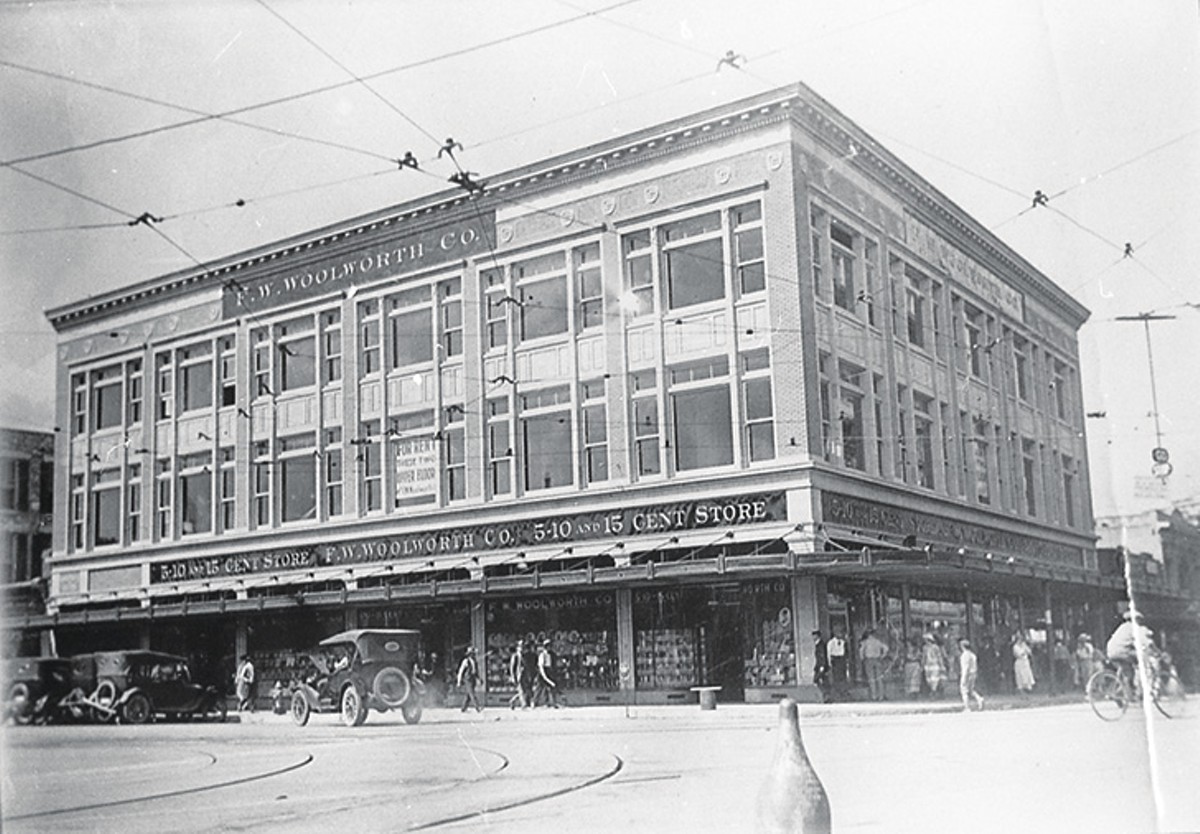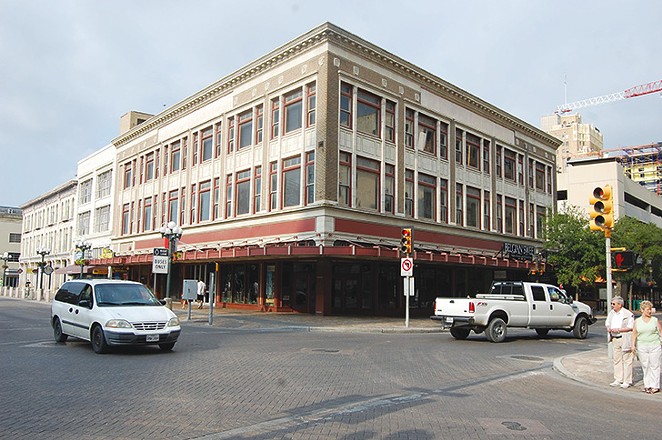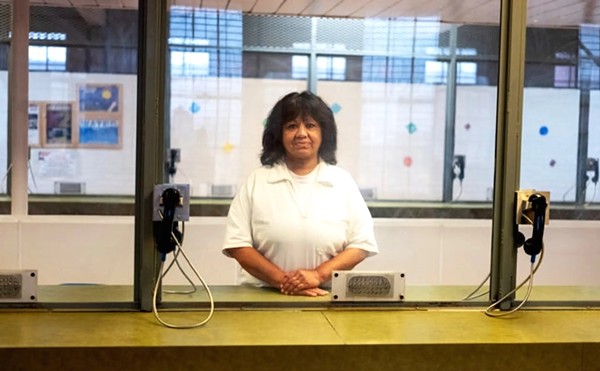At the corner of Alamo Plaza and Houston Street, the Woolworth Building offers few outward clues to its historic past. The 45,000-square-foot structure was once the oldest standing Woolworth's branch in Texas — a formerly ubiquitous five-and-dime store that carried just about everything. It is a key symbol of the Civil Rights Movement. And it sits within the borders of San Antonio's most sacred site: Misión San Antonio de Valero, also known as the Alamo.
Today it seems like just another Downtown building. Sandwich couriers on bikes stream in and out of the building's Jimmy John's location. Tourist attractions take up most of the space. A man in a ghostly costume standing next to a fake electric chair (dubbed "Shocker") tries to lure people into buying a ticket to Ripley's Haunted Adventure.
The building was purchased by the state's General Land Office (GLO) in late 2015. The agency is preparing a new master plan to re-envision Alamo Plaza that will likely mean another new chapter in the building's story. But what that will be is unknown.
Symbol in the South
The Woolworth's at Alamo Plaza first opened around 1921. Before that, it was the site of Maverick Bank, at one point the tallest building in San Antonio.
The store shuttered in October 1997. The corporation closed hundreds of locations in the late 1990s, including three in San Antonio, as its specialized retail stores became more profitable. Foot Lockers or Champ's Sports replaced many Woolworth's locations.
When it was open, Wooloworth's became a touchstone of the Civil Rights Movement. Until 1960, itslunch counters were segregated. Black customers could shop at the stores (though they were sometimes barred from trying on clothes), but couldn't sit at the lunch counters. That began to change on February 1, 1960, when four black students staged a sit-in at a Woolworth's in Greensboro, North Carolina.
The demonstrations rippled all the way to San Antonio. Local leaders of the National Association for the Advancement of Colored People such as Harry Burns and Rev. Claude Black warned on March 15 that protests like the ones in North Carolina would occur if lunch counters weren't desegregated by March 17. Although a few stores lagged, by March 16, San Antonio was the first city in former Confederate territory to integrate its lunch counters.
"The Woolworth's, of course, became ... kind of a symbol ... in the South," said Martin Kuhlman, a history professor at West Texas A&M University who studies the Civil Rights Movement in Texas. "Woolworth's was going to say 'Oh, this is bad for business. We better change our ways.'"
Preservation Texas, a cultural resource advocacy group, included the Alamo Plaza Woolworth Building in its 2016 Most Endangered Places, an annual list of "cultural, architectural and historic places that are at risk." The group noted that the building's significance is due largely to its Civil Rights roots.
"In San Antonio, the Woolworth Building is the site of the first successful desegregation of a lunch counter resulting from such direct action, but it's [sic] future is questionable," the entry on the endangered places list reads. "Its preservation should stimulate a greater awareness of the importance of preserving the legacy of the modern Civil Rights era."
Dictated by History
Davis Phillips, general manager and president of Phillips Entertainment, oversees the attractions in the building: Ripley's Haunted Adventure, Tomb Rider 3D and the Guinness World Records Museum. He thinks the building landed on the list because of the uncertainty surrounding their future, and rumors that it may be torn down. But he thinks that's unlikely.
Although the GLO is now his landlord, Phillips Entertainment still has over a decade left on its lease and can't be forced to move. Phillips is now working with the GLO and other Alamo Plaza planners on the building's long-term future.
"We're good neighbors here. We don't want to be impediments to this [new plan], we just don't want to be steamrolled and thrown on the trash heap. Our businesses are important to us and they're important to the city," Phillips said.
The Woolworth and neighboring Palace and Crockett buildings, which the GLO also purchased, sit within the mission's original borders. The headquarters of William B. Travis, who commanded the Alamo during the 1836 siege, were located close to them. He was likely there when he wrote his famous "Victory or Death" letter before the battle asking for aid.
Even though there's no plan for them yet, procuring the buildings was essential for the long-term Alamo Plaza plan, according to Becky Dinnin, director of the Alamo.
"The plan is going to be based on ... the importance of telling the whole story of the mission and of San Antonio, too, that was built up around this important piece of our history," Dinnin said. "What's possible with [the Woolworth Building] will be dictated to us by history."
The plan is still in its infancy, but stakeholders will have to work fast, Dinnin said. She hopes to have concrete ideas by 2017 to present to the Texas Legislature and to the City of San Antonio for the bond election. Phillips suggested that the building could be a museum, perhaps to house musician and Alamo enthusiast Phil Collins' vast collection of Alamo artifacts. His and the other attractions near Alamo Plaza could then relocate and potentially create an "Alamo Entertainment District." Whatever happens, he hopes that the area's historic significance is presented in a way that will engage visitors.
"History by itself doesn't sell. ... That's where the [tourism] industry can bring in the pixie dust," Phillips said. "If the only person who enjoys this is the 75-year-old history professor, we're going to be in a world of hurt."



















